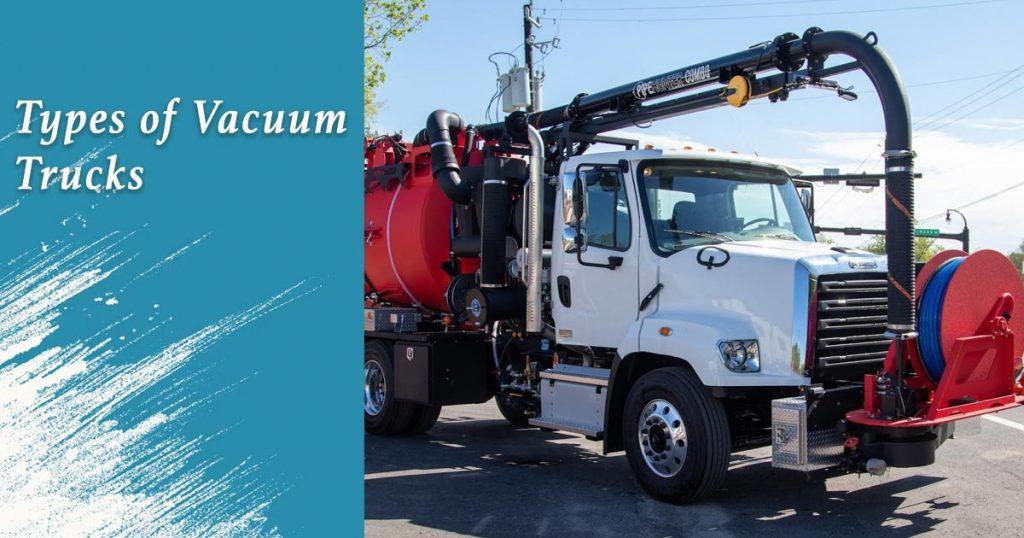Vacuum trucks are specialized vehicles used for a range of industrial and municipal cleaning tasks. When exploring the types of vacuum trucks, you’ll find that they come in various designs to handle different materials and applications. Learning about the specific types can help in selecting the right equipment for your needs. In this blog, we’ll explore the different vacuum trucks and their vacuum truck applications, offering a clear overview of their features and uses.
What is a Vac Truck
A vac truck, short for vacuum truck, is a specialized vehicle designed to handle the collection and transportation of various types of waste, including liquids, solids, and sludge. These trucks use powerful vacuum systems tosuck up material from different surfaces and store it in a tank or container. Understanding the features of a vac truck can help you determine its suitability for specific tasks.
- High-Powered Vacuum System: Vac trucks are equipped with robust vacuum systems capable of generating high suction power to efficiently collect waste materials, whether they are liquid or solid.
- Large Capacity Tanks: These trucks feature large tanks designed to hold significant volumes of collected waste. The size of the tank depends on the type of vac truck and its intended use, ranging from 1,000 to 10,000 gallons (3,785 to 37,854 liters) for liquids, or up to 15 cubic yards (11.5 cubic meters) for dry materials.
- Hose and Boom Systems: Vac trucks come with flexible hoses and boom systems that allow them to reach various areas and collect materials from different angles. The length of these hoses can vary, typically ranging from 25 to 50 feet (7.6 to 15.2 meters), making it easier to access hard-to-reach places.
- Filtration and Separation Systems: Many vac trucks are equipped with filtration systems to separate solids from liquids, ensuring that the collected materials can be processed or disposed of appropriately. This feature is particularly important for handling mixed waste.
- Versatile Applications: Vac trucks are designed for a wide range of applications, including sewer cleaning, industrial waste removal, hydro excavation, and emergency spill response. Their versatility makes them valuable assets in various industries and municipal services.
Types of Vacuum Trucks
Vacuum trucks come in several types, each designed to handle specific tasks. Here’s a closer look at the main types of vacuum trucks and what they can do.
Liquid Vacuum Trucks
Liquid vacuum trucks are designed primarily for collecting and transporting liquids. These trucks are equipped with large tanks to store the liquid waste or slurry they collect.
Capacity and Size: Liquid vacuum trucks typically have tanks that range from 1,000 to 10,000 gallons (3,785 to 37,854 liters). They are built to handle substantial volumes of liquid waste.
Applications:
- Sewer Cleaning: Used to clear out and maintain municipal sewer systems.
- Industrial Waste: Ideal for collecting liquid byproducts from industrial processes.
- Emergency Spill Response: Effective in cleaning up hazardous liquid spills.
- Tank Cleaning: Suitable for removing residual liquids from storage tanks.
- Liquid Sludge Removal: Efficient for handling sludge in wastewater treatment plants.
Dry Vacuum Trucks
Dry vacuum trucks are designed to handle dry materials, such as dust, sand, and debris. They feature a sealed tank to prevent leakage of the collected materials.
Capacity and Size: These trucks generally have a capacity between 5 to 15 cubic yards (3.8 to 11.5 cubic meters) for dry materials. They are built for different sizes and types of debris.
Applications:
- Construction Sites: Ideal for removing construction debris and dust.
- Industrial Cleaning: Used for cleaning up dry waste in industrial settings.
- Vacuuming Spills: Efficient for handling dry spills and waste.
- Warehouse Cleanup: Helps in maintaining cleanliness in large storage areas.
- Road and Street Sweeping: Effective for collecting dust and debris from roadways.
Hydro Excavation Trucks
Hydro excavation trucks use high-pressure water to break up soil, which is then vacuumed into a holding tank. This method is especially useful for digging and exposing underground utilities without causing damage.
Capacity and Size: Hydro excavation trucks typically have tanks similar to those of liquid vacuum trucks, ranging from 1,000 to 10,000 gallons (3,785 to 37,854 liters).
Applications:
- Utility Installation: Helps in safely digging around utilities like gas and water lines.
- Potholing: Used to expose underground infrastructure for maintenance or inspection.
- Sensitive Excavation: Ideal for areas where traditional digging methods might cause damage.
- Trenching: Useful for creating trenches for laying pipes or cables.
- Debris Removal: Effective in removing debris from construction sites without damaging underlying structures.
Combination Vacuum Trucks
Combination vacuum trucks are versatile vehicles that can handle both liquids and solids. They combine the features of liquid and dry vacuum trucks, making them suitable for a wide range of applications.
Capacity and Size: These trucks often have multi-compartment tanks to separate solids and liquids. Their capacity varies widely, generally from 1,000 to 10,000 gallons (3,785 to 37,854 liters) for liquids and 5 to 15 cubic yards (3.8 to 11.5 cubic meters) for solids.
Applications:
- Municipal Maintenance: Used for cleaning sewer systems and street cleaning.
- Industrial Sites: Effective for handling both liquid and dry waste in industrial environments.
- Construction Projects: Ideal for tasks that require both liquid and solid waste removal.
- Oil Spill Response: Useful in environments where both oil and debris need to be managed.
- Hydro Excavation Support: Assists in tasks requiring both excavation and waste collection.
Choosing the Right Vacuum Truck for Your Needs
Understanding the types of vacuum trucks and their specific applications is crucial for selecting the right equipment for your needs. Each type—whether it’s a liquid, dry, hydro excavation, or combination vacuum truck—offers unique advantages tailored to different tasks. By knowing what each truck can handle, you can make an informed decision, ensuring efficiency and effectiveness in your cleaning and waste management operations.
